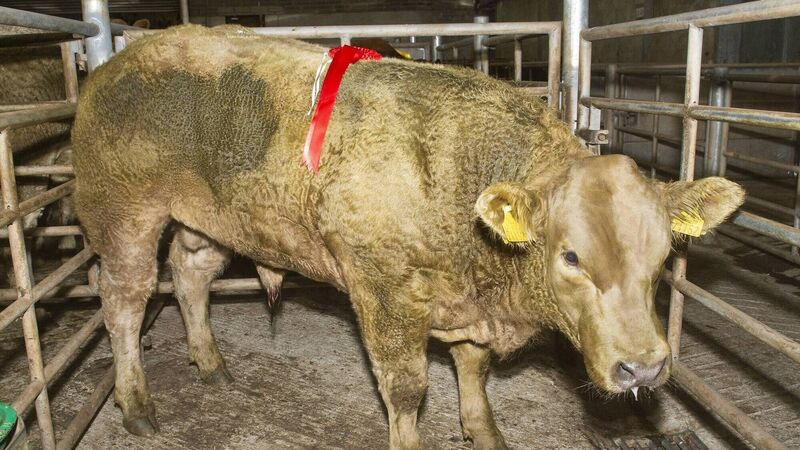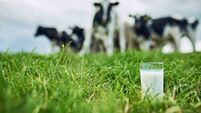Beef Report: Difficult for finishers to get much above 420c per kg for steers

The male champion at an AXA Agri Insurance sponsored weanling show and sale in Skibbereen Mart owned by Donal Murphy, Baltimore was a Charolais bull born February '21 weighing 430 kilos which sold for €1,260. Photo O'Gorman Photography.
There is an overall steady tone to the beef trade at the factories this week with both the finishers and the processors continuing to hold their ground.
While the officially quoted prices are unchanged there is a feeling that the processors are moving to tighten their rein on paying above their quoted prices to the same degree as over the recent weeks.
There was heavy rainfall in some areas of the country over the past week which has resulted in some deterioration in ground conditions and more farmers are expected to proceed with lightening their stocking levels.
In the background, the processors are continuing to closely monitor the balance between their requirements for cattle and the weekly inflow which is a crucial factor in regulating the price on their side.
As of this week, the base for steers has continued to be quoted at 415 cents/kg with some deals being made at up to 420 cents/kg. It is more difficult for finishers to get much above that right now.
The heifers are on a base of 420 cents/kg with up to 425 cents/kg being paid in some deals.
The young bulls continue to trade at par with the similar grade steers with R grade at 415 cents/kg in general.
The cows are also stable retaining the recovery over recent weeks with the quality R grade cows making up to 390 cents/kg.
The intake has remained very stable over recent weeks at just shy of 36,000 head which is leaving some comfort zone to the processors and easing pressure on sourcing stock to meet their requirements.
The supply last week was 35,751 head which was slightly lower than the prior two weeks while being around 2,000 head more than for the same week last year.
The supply of steers remains strong at 17,872 head compared to 16,300 head for the same week last year. The heifers are also higher than last year at 9,735 head compared to 9,156 head in 2020. The cows are 350 head less than 2020 at 6,082 head and the intake of young bulls is slightly up on 2020 at 1,524 head.
So where does the supply currently sit in comparison to last year at the beginning of October?
Year to date total intake is at 1,251,243 head compared to 1,322,018 head for the first nine months of last year showing a drop of almost 81,000 head.
The expectation is that intake for the year could be down by the order of around 120,000 head.
Given that expectation, it is reasonable to expect supply to remain tight for the balance of the year with the weekly intake back by an average of 2,500-3,000 head per week on the 2020 level.










